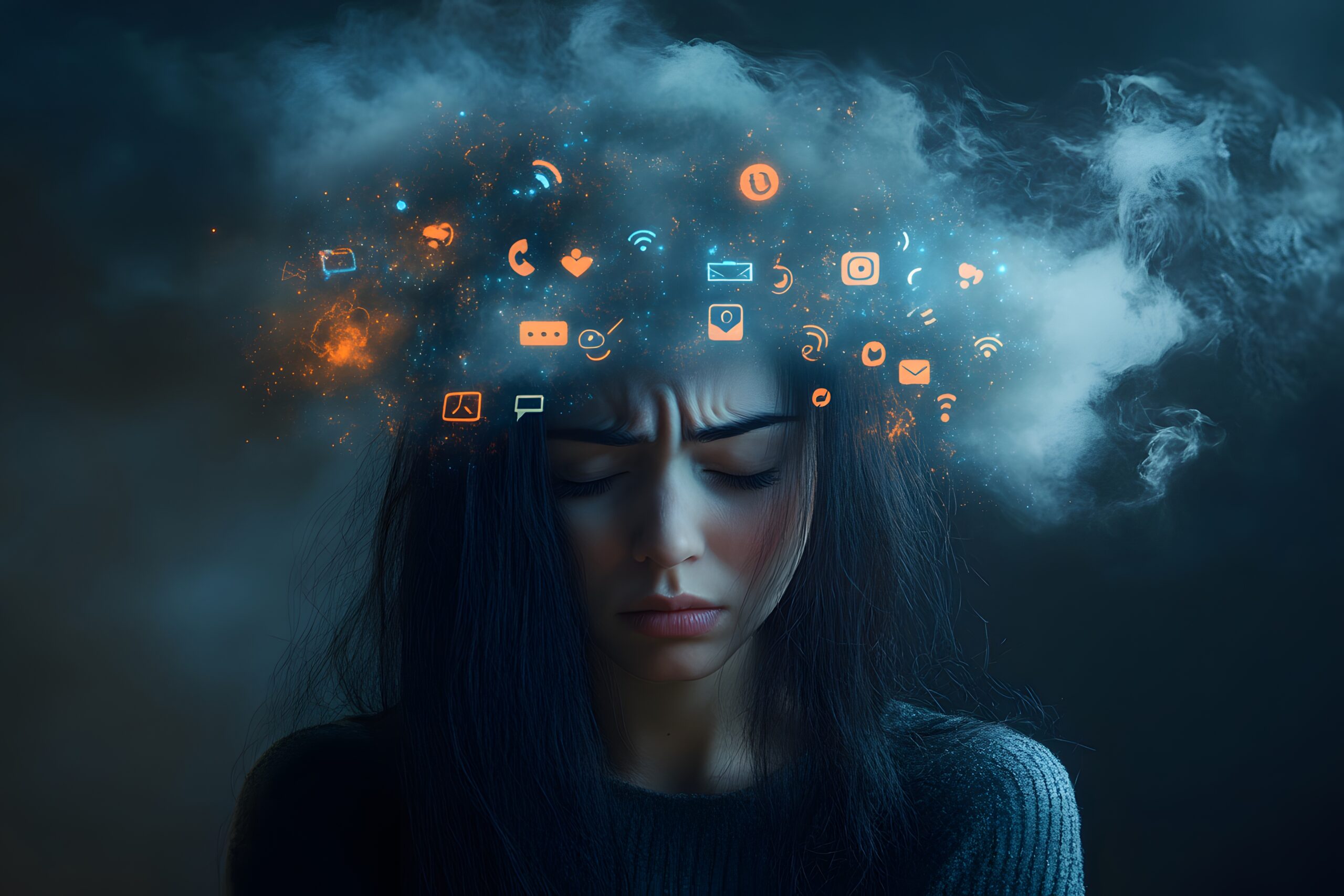How is AI in mental health changing the way we access emotional support? Can chatbots powered by AI in mental health truly understand and respond to human feelings? What ethical considerations come with using AI in mental health tools instead of traditional therapy?
This blog explores how AI in mental health is revolutionizing support through chatbots that offer immediate, personalized care. Tools like Woebot, Wysa, and Stresscoach use machine learning and natural language processing to simulate therapy-like interactions, providing daily journaling prompts, guided meditations, and CBT-inspired dialogue. These apps are helping people manage stress, anxiety, and depression in real time, especially those in underserved or remote areas.
At the same time, the post examines the ethical and practical challenges of relying on AI in mental health solutions. From concerns around data privacy and limited crisis intervention to the empathy gap and algorithmic bias, readers will gain a deeper understanding of what’s at stake. While not a replacement for professional care, these technologies are an important step toward expanding mental health access and reducing stigma, offering a promising future where help is just a tap away.
Picture this: It’s two in the morning and you can’t sleep. Your mind is racing, spiraling with everything you have on your plate—a looming project deadline at work, a string of unread texts and emails from friends and family, other personal to-dos, bills, and the constant barrage of information from the daily news.
In these late-night moments when you feel most isolated, what if you could reach for your phone and instantly chat with someone—a robot, that is—to help soothe your woes? Suddenly, you’re no longer alone and actively working on feeling better.
The reality is that mental illness is a pressing concern, affecting millions of people each year. The National Institutes of Health (NIH) reports that about 57.8 million adults are living with some form of mental illness, with the severity varying from person to person.
Despite the prevalence of mental illness, many people struggle to access care, particularly those living in rural, underserved areas.
However, mental health chatbots like Woebot, Wysa, and Stresscoach are emerging to change that.
As a data scientist and psychologist, I find the concept of AI in mental health exciting. It also feels promising, as the technology that powers these chatbots continues evolving and improving. In this blog, we’ll cover how AI mental health bots work, how they’re used, and the essential ethical and practical considerations to keep in mind.
Table of Contents:
Applications of AI Chatbots in Mental Health
- Daily Mood Journaling
- Guided Mindfulness & Micro-Meditations
- CBT-Inspired Dialogues
- Symptom-Specific Support
Benefits of Using AI Chatbots for Mental Health
- Instant, Uninterrupted Access
- Reduced Stigma
- Improved Affordability & Accessibility
- Personalized Interactions
Ethical and Practical Considerations
How AI Chatbots Work
So, how exactly do these chatbots work, and what does AI in mental health even look like?
Natural language processing (NLP) algorithms are at the core of these chatbots. This tech is responsible for transforming human sentences into structured data. These large language models analyze billions of data points, from books to therapy transcripts and anonymized chat logs, to interpret, comprehend, and replicate human language.
On top of that is machine learning, which is trained to spot patterns and make inferences based on what you type into chat. For example, if you say, “My chest feels tight and I feel nervous,” the algorithm could interpret that as anxiety based on the data it has, and suggest resources and coping mechanisms to help you. Over time, the model continues learning and improving its recommendations by internalizing reinforcement and feedback from the user, such as giving a thumbs-up on a fitting response, allowing it to learn which responses serve you best so it can continue performing effectively.
Text-Based vs. Voice-Enabled
Most chatbots converse through text because typing feels private and controllable—users can reread or delete messages before they send. Voice-enabled versions, however, are beginning to pop up, too, offering hands-free support while cooking dinner or driving to work, making it so that you truly can access care anytime, any place.
The conversation typically follows a loop: a user types (or speaks) a concern. The bot classifies the statement’s emotion, whether sadness, anger, fear, guilt, or something else, and returns a combination of empathy and gently structured guidance. After a set of exchanges, it offers a summary or an actionable takeaway—perhaps scheduling a brief check-in the next day or suggesting a mindfulness practice.
Key Features of AI Chatbots
While using AI in mental health isn’t necessarily a replacement for traditional therapy or human interaction, AI chatbots have a few key beneficial features that make them an intriguing choice for many people looking to access care.
- They’re available 24/7.
- They’re scalable and have extremely low cost-per-use, as millions of sessions can happen simultaneously. This makes them more affordable and accessible for users.
- They offer a greater degree of anonymity than you can get in a traditional office.
While they may not be for everyone and can’t replace all the elements of traditional therapy that people find most effective, including the personal relationship one often forms with their therapist, these chatbots are opening the door for people who may otherwise go without care, to access it in a way that likely wouldn’t be possible otherwise.
Applications of AI Chatbots in Mental Health
As vast as the technology is, there are various use cases and applications for AI in mental health. The scope of these chatbots is increasingly impressive. Just to name a few applications, there’s:
- Daily Mood Journaling
- Guided Mindfulness & Micro-Meditations
- CBT-Inspired Dialogues
- Symptom-Specific Support
1. Daily Mood Journaling
Journaling has long been recommended as a way to reduce and manage feelings of stress, anxiety, and depression, and several studies indicate a consistent journaling practice can have these effects.
But if you’re new to the practice, getting started can feel intimidating. Instead of staring at a blank journal, users answer micro‑prompts from AI chatbots, such as “Pick three emojis for today,” “List three things you’re grateful for,” and “Rate your social battery.” Over time, the bot visualizes trends to serve you better. It may find that Sunday night doom peaks at a certain time in the evening, or that regular workouts correlate with higher feelings of positivity. Apps like Daylio, Moodfit, and Clarity are great for this.
2. Guided Mindfulness & Micro-Meditations
AI in mental health and chatbots can also promote mindfulness and lead you in micro-meditations throughout your day. For example, the bot could give you a two-minute grounding meditation to run through before a big presentation or help calm you down with a 10-minute breathing exercise and guided meditation before bed.
Several studies indicate that meditation and mindfulness training can have positive impacts on mental health, helping reduce depression and anxiety and improve overall well-being. Headspace and Calm are two of the most popular apps for convenient guided meditations and mindfulness practices.
3. CBT-Inspired Dialogues
Cognitive behavioral therapy (CBT) is a common type of talk therapy, also called psychotherapy. It’s used to treat a wide range of mental illnesses, as you work with a psychologist or other licensed therapist in a structured, routine way. One of the ultimate goals is to become more aware of your thinking patterns and the relationship between your thoughts, feelings, and behaviors to better navigate challenging situations.
This is a very human interaction, but AI in mental health and some chatbots are providing a similar level of care. CBT hinges on identifying distorted thoughts and replacing them with balanced ones. Chatbots can mimic this by asking, “What evidence supports that belief?” or “How would you talk to a friend in the same situation?”—guiding users to healthier thought patterns. Woebot, Youper, and Wysa are some of the most notable CBT chatbots currently available.
4. Symptom-Specific Support
One of the most universal ways these chatbots come in handy is by helping with symptom-specific support. If you’re feeling anxious, they can help by suggesting grounding exercises or other activities to soothe yourself. If you’re feeling depressed, they may suggest gratitude prompts, behavioral action plans to help give you a pick-me-up, or even direct you to crisis resources. If you’re feeling stressed and overwhelmed, the bot may explain time-boxing techniques, different strategies for prioritizing tasks, and relaxation techniques and exercises.
Some bots even integrate with wearable health technology to provide more well-rounded care and recommendations. A spike in heart‑rate variability may trigger a calming notification, and three consecutive nights of poor sleep may prompt a sleep‑hygiene check-in.
Benefits of Using AI Chatbots for Mental Health
AI in mental health offers us an innovative, convenient way to manage our mental well-being. While, again, mental health chatbots may not be a complete replacement for professional therapy, they can be a valuable tool for managing mental health symptoms, and offer incredible benefits, such as:
- Instant, Uninterrupted Access
- Reduced Stigma
- Improved Affordability & Accessibility
- Personalized Interactions
1. Instant, Uninterrupted Access
A therapist vacation, a holiday weekend, a worldwide pandemic—none of these things can shut down your chatbot. For many, that uninterrupted presence is therapeutic, providing a consistent anchor in trying times.
Care is also instant whenever you need it. All you have to do is pull up the app. There’s no need to get in your car or on public transit to get to an office, sit in the waiting room, and then say everything you want to say within your appointment window. That concept alone is a barrier for many people in need of therapy, but AI in mental health and intuitive chatbots eliminate it.
2. Reduced Stigma
In 2024, 45% of people globally who need mental health care and don’t receive it named stigma as one of the reasons, along with cost and lack of providers, according to Huntington Psychological Services.
For many people, typing into an app feels less daunting than saying “I need help” to a receptionist at a therapist’s office. Users can explore feelings anonymously with a chatbot, which is often the first step toward seeking formal care. Chatbots can help people feel more comfortable about their feelings before seeking a provider. And even if traditional therapy still isn’t in the cards for them, the bots are still helping reduce stigma by ensuring more people simply have access to care conveniently.
3. Improved Affordability & Accessibility
The cost of therapy varies based on several factors, including where you live, but in the U.S., traditional therapy costs about $100-$250 per hour-long session. Conversely, most mental health chatbots are free to use, though some may offer more premium features for a monthly fee; they’re still significantly cheaper than a single therapy session.
In areas where health care is scarce, such as rural counties in the U.S., where 60% of them lack a single psychiatrist, these apps are emerging to fill a major gap.
4. Personalized Interactions
The longer you talk with the chatbot, the sharper the algorithm understands your triggers, tone, and progress. It adjusts complexity (swapping clinical jargon for plain language), timing (nudging you during historically low‑mood windows), and modality (switching from CBT to mindfulness if one resonates better). While the experience you receive with a traditional therapist would certainly be tailored to you, the degree to which AI in mental health can personalize the journey is hard to compete with, as it’s all based on your real-time data.
Ethical and Practical Considerations
With any good thing, particularly regarding technology advancements, there’s give and take. There are certainly benefits to mental health chatbots, but there are also important ethical and practical considerations to consider.
- Privacy & Data Security
- The Empathy Gap
- Crisis Management Limits
- Algorithmic Bias
1. Privacy & Data Security
Anytime we talk about AI, data, chatbots, and similar technologies, data privacy and security will always emerge as a top concern. Chat transcripts may expose trauma histories, substance use, or suicidal ideation. The best-in-class apps will be the ones that encrypt end-to-end, minimize data retention, and publish third-party audit results.
As users, it’s important to carefully research and read the fine print of the apps you’re interacting with before you share information you may regret later.
2. The Empathy Gap
Despite our major technological strides in the past few years, even the most advanced model doesn’t feel empathic. It’s really just predicting the next best sentence to send you. Subtle verbal cues like voice tremors, long pauses, and even your body language can’t be detected. It’s important to keep this in mind when interacting with this technology. It can’t ever claim to truly understand how you feel; for some people, that lack of connection may be a turn-off.
3. Crisis Management Limits
Most platforms triage risk via keywords that indicate you may be at risk of causing harm to yourself or others. They provide hotlines or emergency prompts but cannot dispatch EMS or negotiate a firearm relinquishment. Responsible design makes these limitations explicit and easy to escalate beyond the bot. It’s critical to be aware of these limits and to know where to turn when you need active crisis management, as the chatbot’s limited capabilities likely won’t be sufficient.
4. Algorithmic Bias
Language models absorb societal biases present in training data. For marginalized groups, a careless response can deepen harm. Any time a new AI tool or algorithm is being designed and tested, it’s critical that it be trained on unbiased, inclusive data. As a user, it’s important to remember that any time you interact with AI algorithms, there’s a chance for algorithmic bias to be present.
Conclusion
AI in mental health has a lot of promise. It’s not to replace humans but to weave a safety net of accessible, affordable, around-the-clock mental health care to people when they need it most and struggle to get it any other way. These chatbots are democratizing and destigmatizing care, helping ensure fewer people fall through the cracks.
The technology isn’t perfect, though. It’s still evolving and advancing, and there will undoubtedly be bugs and setbacks throughout its use. That said, the future outlook of AI in mental health support is full of opportunity as next-gen models offer more advanced analytics and finely-tuned recommendations.
The challenge and opportunity are to build these tools with rigorous ethics and transparency. For many, mental health is a lifelong journey, but tech like AI and chatbots are your backpack companions; the lightweight tools you always carry with you to help lighten the load and make your trek a little easier.









One Response
Great Post.